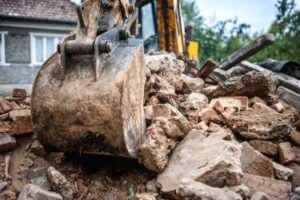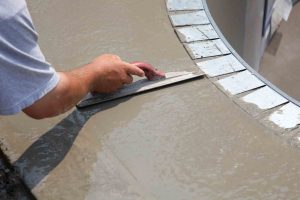Foundations play a crucial role in building construction by providing an enduring, stable platform for the weight loads produced by buildings and their permanent and temporary contents. Concrete is a common foundation material, especially for the construction of private residences and other relatively small structures. During the construction process, builders must carefully consider the soil present at each site. That’s because foundations made from concrete (and other materials) react differently when placed on different types of soil.
The Effects of Clay Soils
Clay has a property that makes it less than an ideal choice for the construction of a concrete foundation. Namely, when wet, this type of soil takes on significant amounts of water and expands. In turn, when expanded clay comes into contact with a foundation, it can generate pressures that cause the concrete to shift upward or downward. Over time, the shifts produced by repeatedly expanding and contracting clay can lead to the development of serious foundation cracking.
The Effects of Peaty Soils
Peat is the name given to a type of soil that forms when organic matter decomposes in a constantly damp environment. Peaty soils usually appear in close proximity to swamps, marshes and other wetland areas. When its water content rises, peat reacts in much the same way as clay. This means that a concrete foundation built on peaty ground is susceptible to the same long-term cracking risks as a foundation built on clay soils.
The Effects of Sandy Soils
Sand does not take on water like clay and peat. This means that a concrete foundation constructed on sandy soil does not generally have an increased risk of cracking as a result of fluctuating water content in the surrounding ground. However, there is another potential problem with sand. Gradually, the sand used as a foundation can simply wash away. In areas where this erosion has occurred, destabilizing voids can form beneath the concrete. To help avoid this possibility, sand is usually compacted together with gravel or some other material not prone to washing away.
The Effects of Loamy Soils
Loam is a type of soil formed from several other materials, including:
- Clay
- Silt
- Sand
The combination of these materials provides important advantages when it comes to constructing concrete foundations. Since clay doesn’t dominate the mix, fluctuating water levels at the construction site will not lead to an increased risk for cracking. And since sand doesn’t dominate the mix, erosion rates are kept small enough to avoid the formation of voids underneath the concrete. For these reasons, experts in the field often consider loam the preferred soil for foundation construction.
The Effects of Bedrock
Technically, bedrock is not a type of soil. Instead, it’s the hardened material that sits beneath soil. In some locations, a bedrock layer lies close enough to the surface to serve as the base for a concrete foundation.
The primary upsides of building on bedrock are maximized stability and weight-bearing capacity. Larger, heavier buildings especially benefit from these factors. However, to act as a stable platform for foundation-building, a bedrock pad must be completely level. The leveling process often calls for the use of specialized machinery.
Addressing Foundation Issues
Cracking is a fairly common issue in concrete foundations. In some cases, a concrete cutting expert like Accu-cut will be able to address this problem with a limited repair. However, in other cases, severe or extensive cracking can lead to the need for a larger demolition and replacement project.



